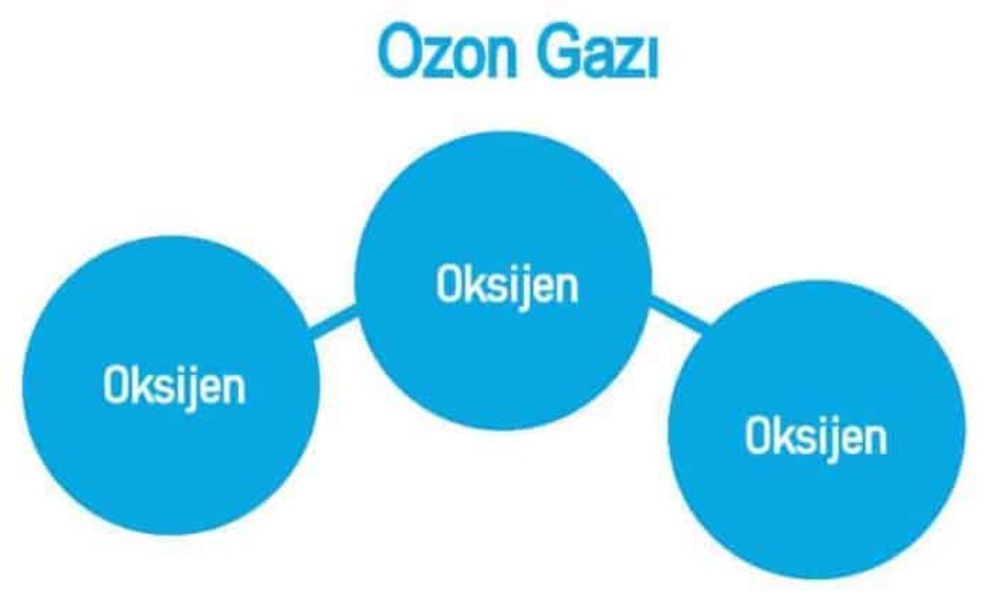
The Effect of Ozone on Odors
Odors are a perception that occurs as a result of people perceiving volatile compounds produced by various substances in our environment through their noses. Generally, unpleasant odors can occur from domestic, industrial or natural sources, and these odors can negatively affect the quality of life. Odors released from industrial waste, domestic waste, kitchens, agricultural areas and many other sources pollute the environment and have negative health effects on people. In this context, ozone is a strong oxidizing gas that plays an important role in eliminating odors.
Ozone (O₃) is a gas formed by the combination of three oxygen atoms found in nature. Ozone is known as a strong oxidizing agent and is effectively used in the oxidation of environmental pollutants and harmful compounds. Its high oxidation power makes ozone effective in eliminating odors. Ozone reacts especially with organic components in the air, making these components less harmful.
Ozone changes the chemical structure of volatile organic compounds (VOCs) by initiating oxidation reactions. VOCs are compounds that cause odors, especially in industrial activities, agriculture, and domestic areas. How ozone neutralizes odors by reacting with these components is directly related to ozone’s high oxidation power and chemical structure.
The basic mechanism by which ozone is effective in eliminating odors is oxidation reactions. Ozone oxidizes organic compounds that form odors by releasing high-energy oxygen atoms. During these reactions, the compounds that cause odors are degraded and usually turn into odorless or less odorous compounds. In order to better understand the effect of ozone on odors, we can consider the following chemical reactions:
Reaction with VOCs such as Acetaldehyde and Acetone: Volatile organic compounds such as acetaldehyde (CH₃CHO) and acetone (CH₃COCH₃) are often released from industrial activities, car exhausts, and other sources. Ozone undergoes oxidation reactions with these compounds, converting them into less harmful substances.
– Chemical Reaction:
CH₃CHO + O₃ → CH₃COOH + O₂
CH₃COCH₃ + O₃ → CO₂ + H₂O + O₂
These reactions provide the removal of odors by oxidizing organic substances.
Reaction with Sulfur Compounds: Sulfur compounds are especially caused by wastewater treatment plants, industrial plants and some agricultural activities. These compounds are released in the form of substances such as sulfur dioxide (SO₂) and hydrogen sulfide (H₂S) and cause strong odors. Ozone reacts with these compounds to produce sulfur oxides and sulfuric acid. These reactions provide the removal of sulfur compounds from the air.
– Chemical Reaction:
H₂S + O₃ → SO₂ + H₂O
This reaction is one of the examples where ozone effectively eliminates odors.
Reaction with Ammonia (NH₃): Ammonia causes strong odors, especially from fertilization, waste management and some industrial processes. Ozone reacts with ammonia to form nitrogen oxides and water vapor.
– Chemical Reaction:
NH₃ + O₃ → NO₃ + H₂O
These reactions are just a few examples of the effect of ozone in eliminating odors. It is known that ozone plays an effective role in eliminating odors by oxidizing many volatile organic compounds in the air.
The use of ozone against odors is widespread, from industrial facilities to domestic areas. Ozone generators and ozone filters are an effective method used to eliminate odors. Some common areas where ozone is used are:
Industrial and Commercial Areas: Ozone is used especially in sectors such as food processing, chemical industry, textile and leather industry. In these sectors, eliminating odors is important both in terms of increasing product quality and ensuring environmental awareness.
Wastewater Treatment and Waste Management: Ozone is used to eliminate odors in wastewater treatment plants. Especially odors resulting from the oxidation of organic substances, sulfur compounds and nitrogen compounds can be effectively eliminated with ozone.
Domestic Areas: Ozone generators and ozone filters can be used to eliminate bad odors in kitchens, homes and offices. Ozone cleans the environment by oxidizing substances that cause odors in domestic areas and improves air quality.
Agricultural Areas: In agriculture, especially in the livestock sector, the release of manure odors and compounds such as ammonia is a significant problem. Ozone can also be used as an effective odor eliminator in these areas.
Vehicle and Transportation: Odors in cars, airplanes and other transportation vehicles can be eliminated with ozone generators. Ozone cleans polluted air in indoor spaces and provides fresh air.
Although ozone has a high oxidation capacity, it can be harmful if used incorrectly. In high concentrations, ozone can cause respiratory tract irritation can cause lung damage and other health problems. Therefore, in order for ozone to be used effectively on odors, it must be used at the right dose and in a controlled environment.
Thanks to its strong oxidation power and high reaction capacity, ozone stands out as an extremely effective substance in eliminating odors. Used in both industrial and domestic areas, ozone contributes to the improvement of air quality by oxidizing organic and inorganic components that cause odors. However, the use of ozone should be done with the right dosage and safety measures, and the negative effects of incorrect use on health should be avoided. The effect of ozone on odors is a very important issue and has great potential for environmental cleaning and increasing air quality.
İlker KURAN
Alperen Mühendislik Ltd. Şti.







